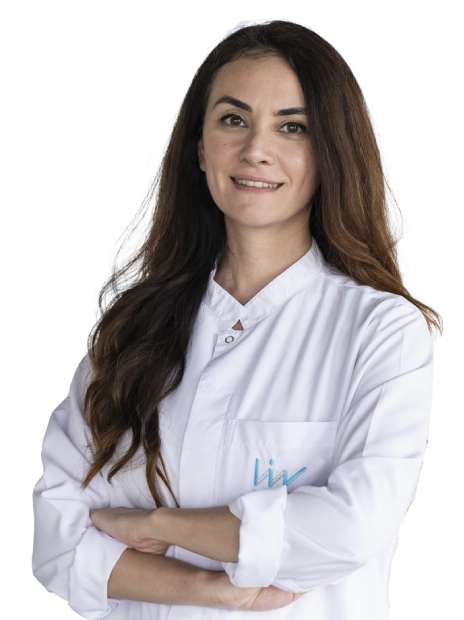Breast Cancer Screening: Importance and Early Detection
Regular breast cancer screening, like mammograms, aims to detect cancer early, often before symptoms appear, which significantly improves treatment success rates. It is a crucial tool for reducing mortality associated with this disease.
What Is Breast Cancer Screening?
The answer to the question "What is breast cancer screening? is quite detailed. Breast cancer screening is the process of checking a woman's breasts for cancer before there are any signs or symptoms. The main goal of screening is to detect breast cancer at an early stage when it is more likely to be treated successfully. It's important to understand that screening does not prevent cancer from developing; rather, it helps identify cancer early if it is already present. Early detection through screening can lead to better treatment outcomes and a higher chance of survival.
Why Is Early Detection Important?
Early detection breast cancer screening significantly improves treatment success rates and survival. When breast cancer is found at an early stage, it is often smaller and has not yet spread to other parts of the body, making it easier to treat. This allows for a wider range of treatment options, many of which may be less aggressive and have fewer side effects. Studies show that women diagnosed with early-stage breast cancer have much higher survival rates compared to those diagnosed at a later stage.
Annual breast cancer screening involves having a mammogram once every year and is often recommended for women at higher risk or those who prefer more frequent monitoring for earlier detection of potential abnormalities.
In short, early detection can save lives by allowing for timely and more effective treatment.
Breast Cancer Screening Recommendations
Breast cancer screening recommendations can vary slightly between different medical organizations, but there are some general consensus and key points to consider for women at average risk. Breast cancer screening age recommendations provide guidelines on when women at average risk should begin and how often they should undergo screening mammography to detect the disease early.
The recommended breast cancer screening interval for most women is every 1 to 2 years, depending on age, risk factors, and medical guidelines. Biennial breast cancer screening, which means screening every two years, is commonly recommended for women at average risk to balance the benefits of early detection with the potential risks of overdiagnosis and false positives.
According to international recommendations such as those from the U.S. Preventive Services Task Force (USPSTF) and the World Health Organization (WHO), women aged 50 to 74 are typically advised to have a mammogram every 1 to 2 years. Some organizations, like the American Cancer Society, suggest offering screening as early as age 40 based on individual risk and preference. Women with a higher risk”due to family history, genetic factors (like BRCA mutations), or prior chest radiation”may need to begin screening earlier and have additional tests like MRI.
The breast cancer screening recommendation in Turkey suggests that women begin having regular mammograms starting at age 40, with screenings every 1“2 years depending on individual risk factors. It's important that individuals consult with their healthcare provider to determine the most appropriate screening schedule for their personal risk profile.
Screening for Average-Risk Women
Women at average risk have no personal history of breast cancer, no known genetic mutation (like BRCA1/BRCA2), and no strong family history.
- Ages 50“74: Mammogram every 1“2 years is strongly recommended by most international guidelines (e.g., USPSTF, WHO). Screening aims to detect cancer early, when it is more treatable and outcomes are better.
- Ages 40“49: Screening can begin based on individual choice, risk factors, and discussion with a healthcare provider.
Screening for High-Risk Women
- High-risk women include those with a strong family history of breast or ovarian cancer, known BRCA1 or BRCA2 gene mutations, or a personal history of radiation therapy to the chest (especially during youth).
- Screening often starts earlier (e.g., as early as age 30).
- Additional tests such as breast MRI may be recommended alongside mammography.
- A personalized screening plan should be developed in consultation with a specialist.
Screening After Age 75
Breast cancer screening for older women typically continues until around age 75, depending on individual health and life expectancy. Routine screening after age 75 is not automatically recommended.
Decisions should be based on overall health status, life expectancy, and personal values. For women in good health with a longer life expectancy, continuing screening may still be beneficial..
Types of Breast Cancer Screening Tests
Breast cancer screening tests detect cancer early, often before symptoms appear. Mammograms are the most common method. Clinical breast exams are done by a healthcare provider, while breast self-exams involve you checking your own breasts. Ultrasound and MRI may also be used for specific cases.
Breast cancer screening methods include:
Mammography
Mammography breast cancer screening helps detect early signs of cancer, improving the chances of successful treatment. It uses low-dose X-rays to capture images of the breast and can identify tumors or microcalcifications before symptoms appear.
Breast MRI
MRI breast cancer screening is a supplementary tool, often used for women at higher risk. It creates detailed pictures of the breast using magnetic fields and radio waves. Because of its sensitivity, it can detect cancers that mammograms might miss, but may also produce false positives.
Breast Ultrasound
Breast cancer screening ultrasound is often used as a supplemental tool alongside mammography, especially for women with dense breast tissue. It helps distinguish between fluid-filled cysts and solid masses but is not typically used as a standalone test.
Clinical Breast Exam and Breast Self-Awareness
A clinical breast exam (CBE) is performed by a healthcare professional to check for lumps or changes. Breast cancer screening through self-awareness empowers women to know what's normal for their body and notice unusual changes early.
Other Investigated Methods
Supplemental breast cancer screening refers to additional imaging tests used in conjunction with mammography for women at higher risk of breast cancer or those with dense breast tissue.
Several experimental or less commonly used methods are being studied for breast cancer screening. Thermography, which detects heat patterns on the breast surface, lacks sufficient evidence of accuracy and is not recommended by major health organizations. Molecular Breast Imaging (MBI) shows promise in detecting cancer in dense breasts but is not yet standard practice.
Blood-based tests and liquid biopsies are also under investigation as future tools for early cancer detection, though they are not currently approved for routine screening use.
Understanding Your Screening Results
After a breast cancer screening, your results can be either normal or abnormal. A normal result means no signs of cancer were detected, while an abnormal result indicates that further tests, such as an ultrasound or biopsy, may be needed.
Normal Results
- No signs of cancer detected during the screening.
- Indicates healthy breast tissue at the time of the exam.
- Continue with regular screenings (every 1“2 years).
Abnormal Results and Follow-Up
Abnormal breast cancer screening results do not necessarily mean cancer is present but indicate that further testing is needed. The next steps may include additional imaging or a biopsy.
Most abnormal findings are not cancer, and the follow-up process helps ensure accurate diagnosis and timely treatment.
Benefits and Risks of Breast Cancer Screening
Breast cancer screening offers important benefits, including early detection, higher survival rates, and more treatment options. However, it also carries some risks like false positives, false negatives, or overdiagnosis.
Benefits of Screening
- Detects cancer early, when treatment is most effective
- Reduces the need for aggressive treatment
- Improves long-term survival and peace of mind
Risks of Screening
- Possible false positives or false negatives
- Minimal radiation exposure from mammograms
- Potential for overdiagnosis
Special Considerations in Breast Cancer Screening
Breast cancer screening is not one-size-fits-all. Women with dense breasts or genetic risks like BRCA1/2 may need customized approaches with MRI or ultrasound. Access and social factors can also affect screening participation.
Screening for Women with Dense Breasts
Women with dense breasts may benefit from additional imaging such as ultrasound or MRI to improve detection rates. It's important to discuss breast density with your healthcare provider.
Addressing Disparities in Screening Outcomes
Access to care, socioeconomic inequities, and cultural barriers can affect breast cancer screening outcomes. Addressing these disparities requires better access, education, and inclusive healthcare policies.
Talking to Your Doctor
Having an open conversation with your doctor ensures you get a breast cancer screening plan tailored to your risk level, age, and personal history. Shared decision-making leads to more confident choices.
Breast Cancer Screening at Liv Hospital
Liv Hospital offers comprehensive, personalized breast cancer screening, utilizing advanced diagnostic technologies and a multidisciplinary team of specialists.
Our Approach to Screening and Diagnosis
At Liv Hospital, we take a patient-centered, evidence-based approach to breast cancer screening and diagnosis. Our goal is to detect breast abnormalities at the earliest and most treatable stage, using advanced technologies and personalized risk assessment. Each patient receives comprehensive care from a multidisciplinary team of specialists who guide them through every step from screening to diagnosis and beyond.
Breast Cancer Screening at Liv Hospital
Liv Hospital offers comprehensive, personalized breast cancer screening, utilizing advanced diagnostic technologies and a multidisciplinary team of specialists.
Advanced Imaging Techniques
- Digital mammography with 3D tomosynthesis
- Breast ultrasonography and MRI
- Automated breast ultrasound for dense tissue
Genetic Risk Assessment
Genetic testing for BRCA1/2 mutations helps create personalized screening strategies for women at higher risk.
Multidisciplinary Evaluation
A team of specialists ” including radiologists, oncologists, and genetic counselors ” ensures complete care throughout your breast cancer screening journey.
Schedule Your Breast Cancer Screening
Taking the first step toward breast health is easy at Liv Hospital. You can schedule your screening online, by phone, or in person. Our specialists help you choose the best plan based on your health and history.
* Liv Hospital Editorial Board has contributed to the publication of this content .
* Contents of this page is for informational purposes only. Please consult your doctor for diagnosis and treatment. The content of this page does not include information on medicinal health care at Liv Hospital .
For more information about our academic and training initiatives, visit Liv Hospital Academy
Frequently Asked Questions
What is breast cancer screening?
It is the process of checking the breasts for early signs of cancer before symptoms appear.
When should women start breast cancer screening?
Most guidelines recommend beginning screening around age 40 to 50 depending on personal risk.
How often should I get a mammogram?
Screening is usually done every 1 to 2 years based on age and risk factors.
Do I need screening earlier if I have a family history?
Yes, women with strong family history or genetic risk may need earlier and more frequent screening.
What does a mammogram show?
It shows breast tissue detail and can detect lumps or microcalcifications not felt during exams.
Are mammograms painful?
Some women feel brief pressure, but discomfort is usually mild and temporary.
What if my screening result is abnormal?
It means further tests may be needed, such as ultrasound or biopsy, but it does not always indicate cancer.
Do dense breasts affect screening?
Yes, dense tissue can make cancer harder to detect, so additional imaging may be recommended.
Is mammogram radiation harmful?
It uses very low-dose radiation, and the benefits of early detection outweigh the risks.
Can lifestyle choices affect breast cancer risk?
Healthy habits such as maintaining weight, exercising, and limiting alcohol may help reduce risk.



